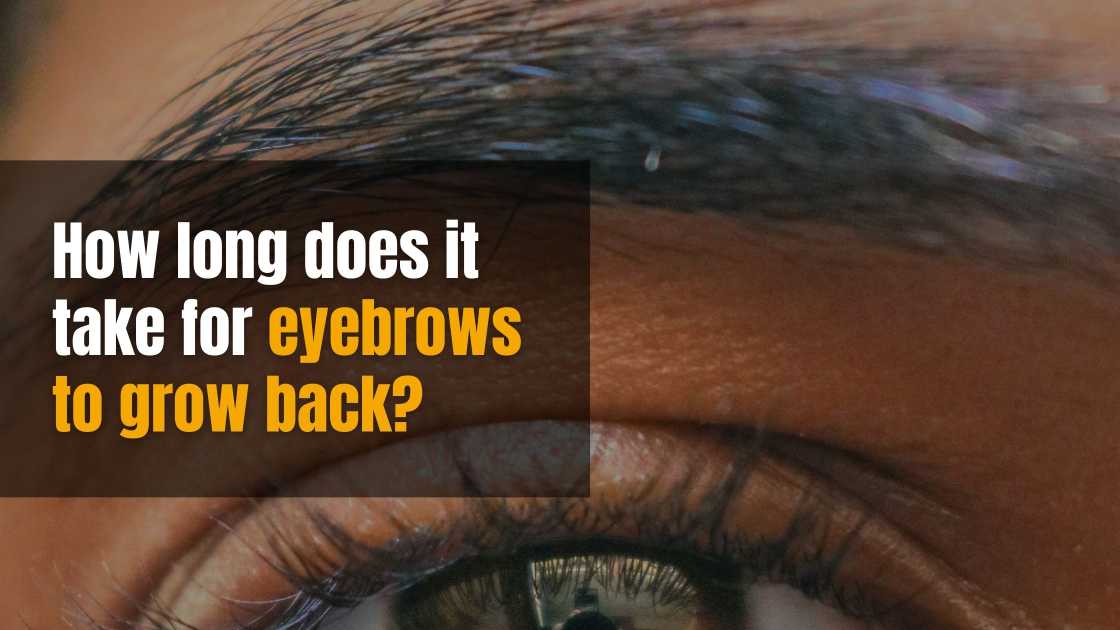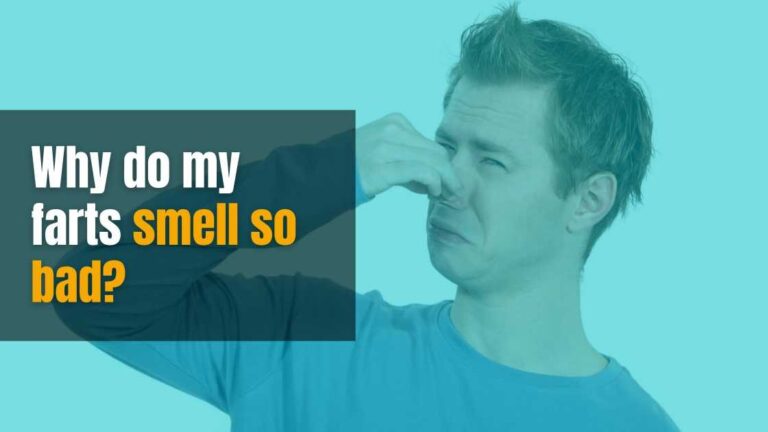Eyebrows are an important feature of the face. Aside from keeping moisture out of our eyes and communicating (facial expressions), without them on our faces, we might look weird. One way or the other, people have lost an eyebrow before and might be wondering how long it would take for it to grow back.
In this post, you will learn how long it takes for eyebrows to grow back.
We previously published an article on “How long does it take eyelashes to grow“
Eyebrows
Eyebrows are swathes of hair above the eye that keeps moisture and dirt off our eyes and are also used for communication (i.e., facial expressions).
Eyebrows are there to keep our eyes clean and clear on a physical level. They keep moisture from sweat and rain out of our eyes, allowing us to keep our vision.
The brows play a crucial role in human expression and communication. They enable us to express our feelings. One raised brow denotes skepticism or curiosity. Also, two lifted brows can communicate surprise.
Can eyebrows grow back?
It was once thought that if you shaved or lost your brows, they wouldn’t grow back. Your eyebrows should grow back unless you have an underlying medical ailment that is causing your hair loss.
A 1999 study dispelled the misconception by demonstrating that shaved eyebrows regrow naturally. Five patients had one brow shaved and the other brow was left for comparison in this study.
Photographs taken at each follow-up were used to measure regrowth over the course of six months. All of the other participants’ brows had grown back to normal within four months, with the exception of one female participant with light-colored, sparse brows who required a full six months to attain full regrowth.
Hair growth is divided into three stages. Some hairs persist in one phase longer than others because the phases aren’t coordinated.
Stages of hair growth
The three stages of hair growth are as follows:
Anagen
The active growing phase. This is the initial stage of brow development. This is the point at which the brows reach their maximum length. This stage might last anywhere between 30 and 45 days.
Catagen
An in-between phase lasts two or three weeks when growth stops and follicles shrink. Before moving on to the third and final stage, the follicle travels closer to the skin and begins to shrink.
This stage might last anywhere between two and three weeks.
Telogen
The resting and shedding phase at the end of which older hairs will fall to make room for new ones. This is also the stage of the development cycle when new hair starts to emerge from the hair follicle.
The old hair will fall out as the eyebrow grows, and the new strand will continue to grow, restarting the cycle.
This period can last anywhere between four and eight weeks.
The full hair growth cycle lasts about four months in total. However, if the hair is just shaved, it will take a fraction of the time because the complete hair will not have to regrow from the follicle.
Slow Eyebrow Growth/Eyebrow Loss Risk Factors
- Stress
- Changes in hormones
- Thyroid problems
- Alopecia
- Habits of life
- Pollution of the environment
- Trichotillomania
- Grooming on a regular basis
How to speed up eyebrow growth
There is no quick remedy for thicker brows. Your age, genetics, and hormones all influence how quickly your brows grow back.
Depending on the source of your hair loss, you may need to consult a doctor about any underlying medical conditions that may have contributed to your brow loss.
Some activities you can do at home to help you grow your brows are listed below.
Avoid plucking, waxing, and threading
Avoid tweezing, waxing, or any other form of hair removal if you want your brows to grow back. This allows your brow hairs to fill in completely.
Eating a balanced diet
A healthy, well-balanced diet may be beneficial. Hair is primarily composed of proteins, and animal studies have shown that a lack of protein can result in hair loss.
Hair development has also been connected to some vitamins, such as the B vitamins and vitamins A, C, and D. These vitamins are abundant in dark leafy greens such as spinach and kale. Meat and beans are both high in protein.
Iron
Hair loss is a typical symptom of iron deficiency anemia, which can also affect the eyebrows. Getting enough iron in your diet may aid in the growth of your brows.
Foods high in iron, such as iron-fortified cereals, white beans, and spinach, can help you get more iron.
Biotin
Biotin, often known as vitamin H or vitamin B7, is a vitamin that belongs to the B vitamin family. Hair growth products containing biotin have become highly popular.
Although there isn’t much research on biotin for hair growth, there is some evidence that increasing biotin intake may help with hair growth.
Add biotin-rich items to your diets, such as organ meats, nuts, and whole grains, to boost your biotin levels. Biotin supplements are also available on the market.
Eyebrow serums
There are several brow serums on the market that claim to help the brows grow faster and thicker. Despite the fact that these claims have not been scientifically validated, they may be worth a try.
Castor oil
Castor oil has long been used as a natural home remedy for hair loss, and it has recently gained popularity as a treatment for brows and eyelashes.
Although no scientific studies have been done to verify that castor oil helps regrow hair, the major ingredient in the oil, ricinoleic acid, has been associated with hair regrowth. It can, at the absolute least, keep your brows hydrated and avoid breakage.
Bimatoprost (Latisse)
Bimatoprost (Latisse) is a drug approved by the United States Food and Drug Administration (FDA) to increase eyelash development and has shown promise in growing eyebrows as well.
Bimatoprost 0.03 percent solution, though not yet approved for use on the eyebrows, has been shown to help regrow eyebrows when applied once or twice a day. For more information about the use of bimatoprost in eyebrow regrowth, read this article.
The takeaway from this article
Eyebrows usually come back, but how quickly they do depends on your age and overall health. All you need is a little patience, avoid plucking and waxing, and improve your diet.
Your eyebrows may fall out or fail to grow properly due to an underlying medical problem. If your eyebrow hairs fall out and stop growing for no apparent reason, see a doctor.
WRITTEN AND EDITED RESPECTIVELY BY:
Dr. Ehoneah Obed is a registered pharmacist and a member of the Pharmaceutical Society of Ghana. He has a Doctor of Pharmacy degree from Kwame Nkrumah University of Science and Technology and has experience working in a Tertiary hospital as well as various community pharmacies. He is also a software engineer interested in healthcare technologies.
His love for helping others motivates him to create content on an array of topics mostly relating to the health of people and also software engineering content.
He is knowledgeable in digital marketing, content marketing, and a host of other skills that make him versatile enough to uplift any team he joins.







Leave a Comment